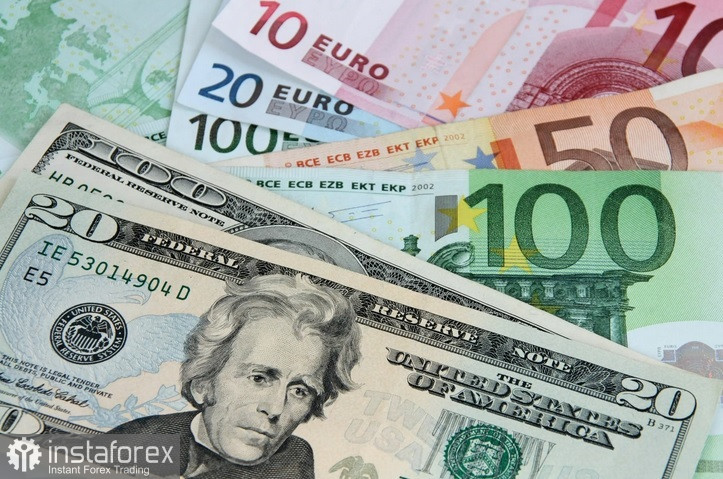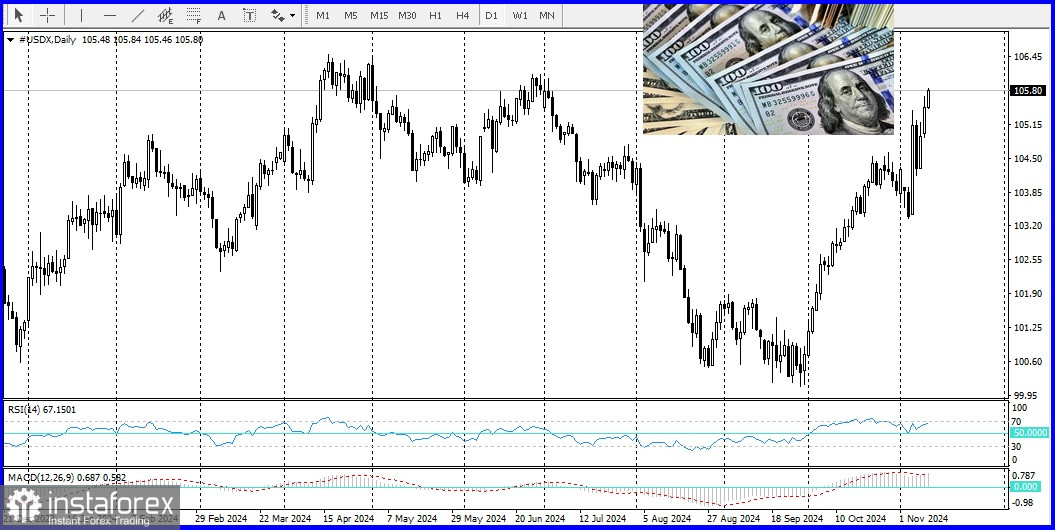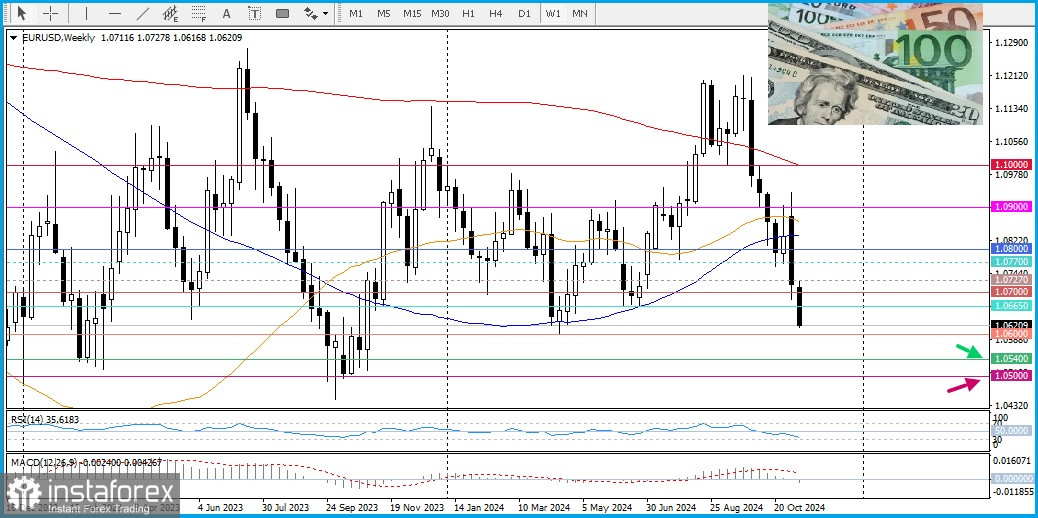
For the third consecutive day, the EUR/USD pair is declining. The U.S. dollar's rally following the elections remains uninterrupted, driven by expectations that President-elect Donald Trump's policies could push inflation higher and restrict the Federal Reserve from easing monetary policy.
According to the CME Group's FedWatch Tool, there is a 65% probability that the Federal Reserve will cut interest rates by 25 basis points and a 35% chance of a pause at the December FOMC meeting. This expectation supports elevated U.S. Treasury yields. These higher yields, in turn, strengthen the U.S. dollar—a key factor contributing to the pair's decline.
During Trump's presidency, Europe is expected to remain a primary target for potential tariffs on its exports to the U.S. Additionally, the euro faces further pressure due to political uncertainty in Germany, the Eurozone's largest economy. Chancellor Olaf Scholz's decision to dismiss Finance Minister Christian Lindner over ongoing disagreements on spending and economic reforms significantly weakened the fiscally conservative Free Democratic Party's position in the three-party ruling coalition.
The Green Party, the remaining coalition partner, has joined opposition calls for an early parliamentary vote, pushing for snap elections. These developments weaken the euro, indicating that the EUR/USD pair is likely to continue its downward trajectory.
From a technical perspective, the Relative Strength Index (RSI) on the daily chart is nearing oversold territory. This suggests that any further declines could find solid support around the 1.0600 psychological level or the yearly low reached in April.
Subsequent selling could lead to a decline to intermediate support at 1.0540, followed by a test of the significant 1.0500 level, which serves as a key psychological barrier.

On the other hand, the daily swing high near 1.0665 serves as immediate resistance, followed by the psychological 1.0700 level. A strong and sustained move beyond the 1.0727 area could push the EUR/USD pair toward intermediate resistance at 1.0770 and eventually to the 1.0800 round figure.
A breakout above this level could trigger a short-covering rally, paving the way toward the 200-day SMA and the psychological 1.0900 level. Momentum could extend further, targeting the monthly high. If this level is breached, spot prices might aim for the significant level of 1.1000.





















